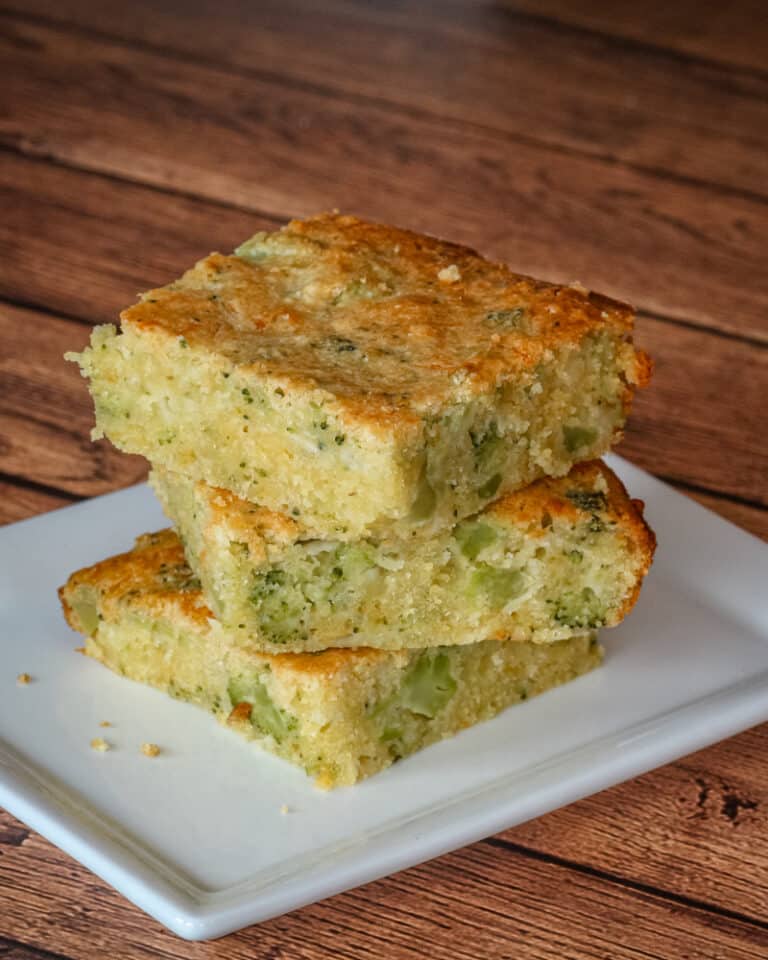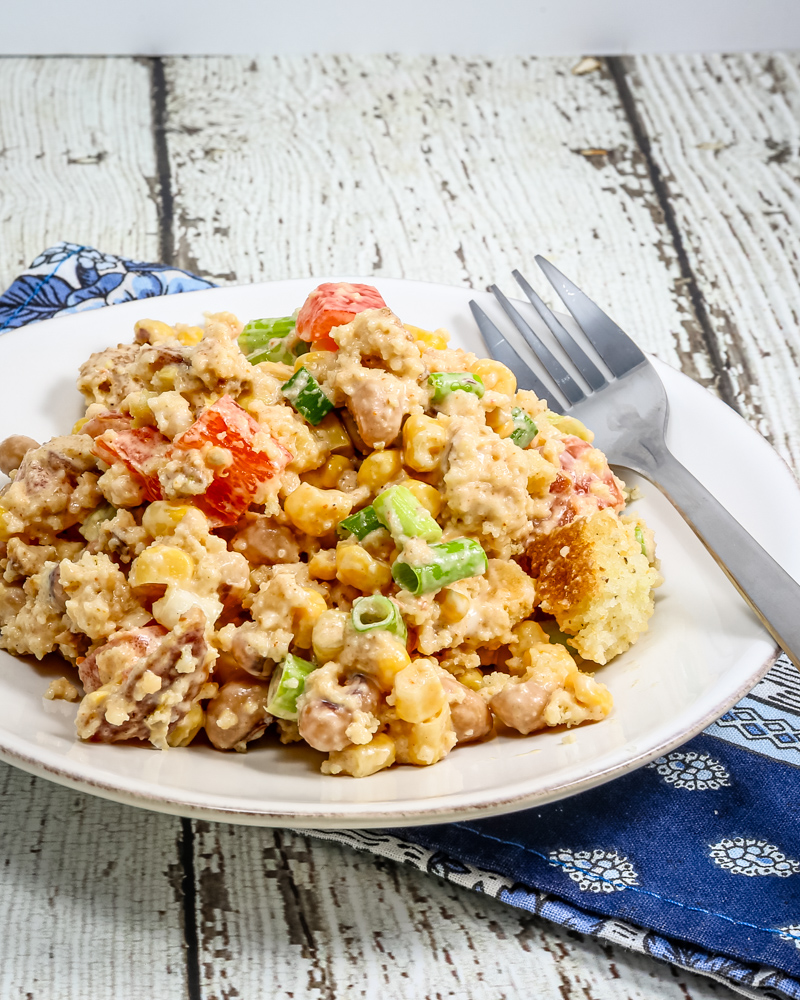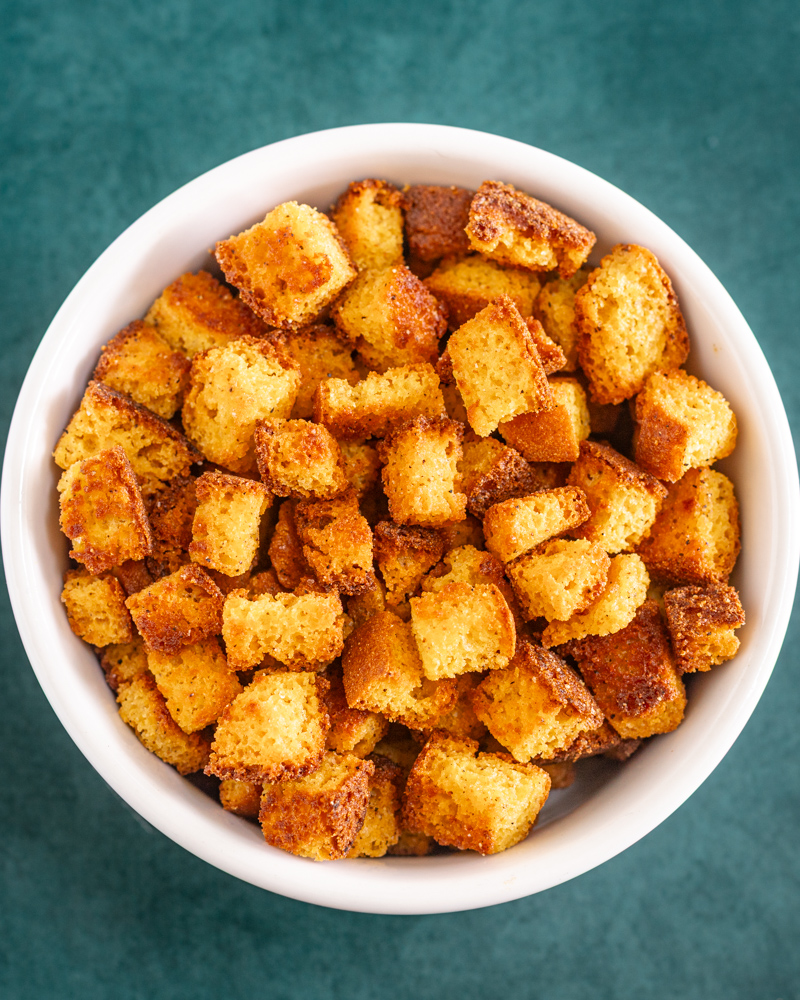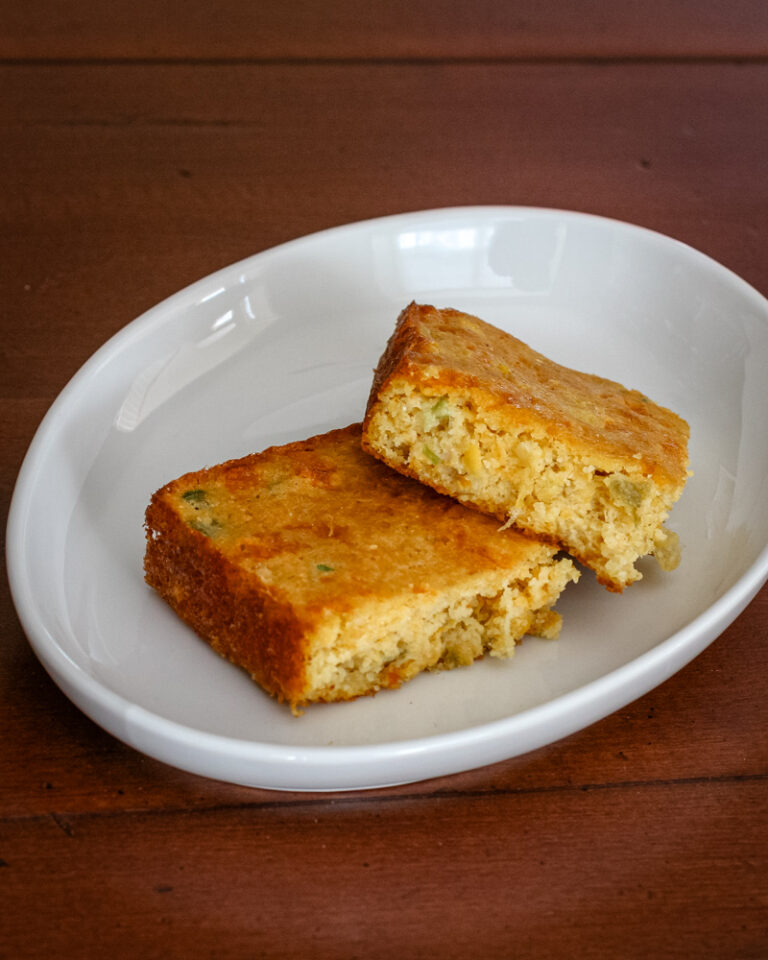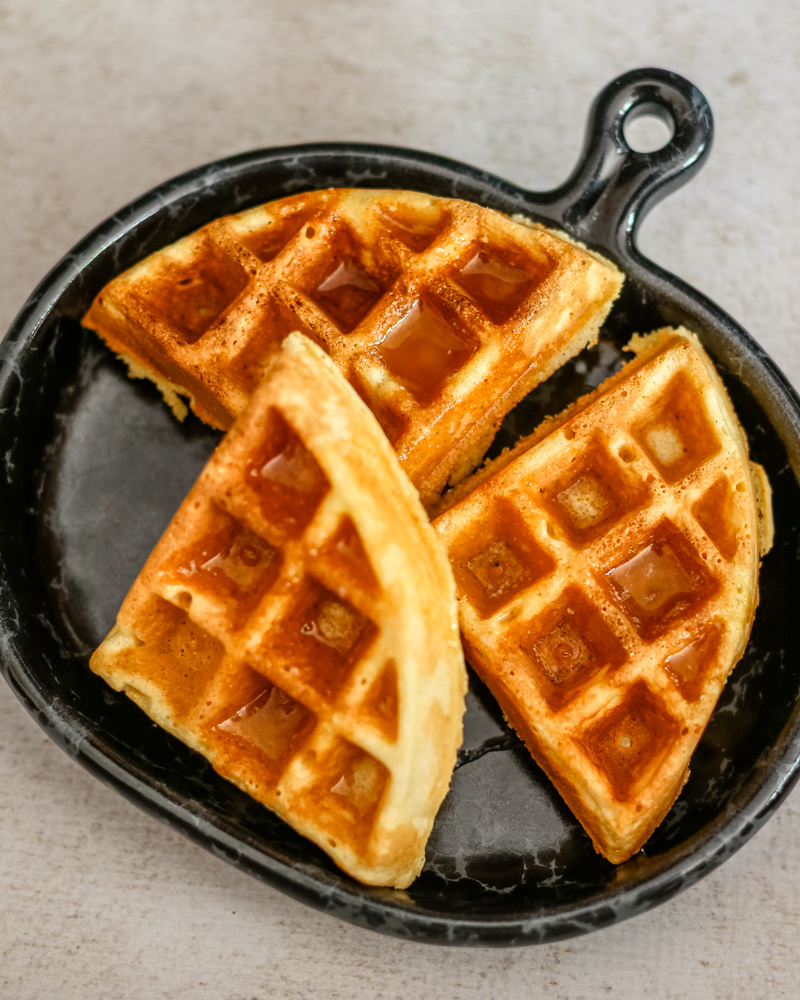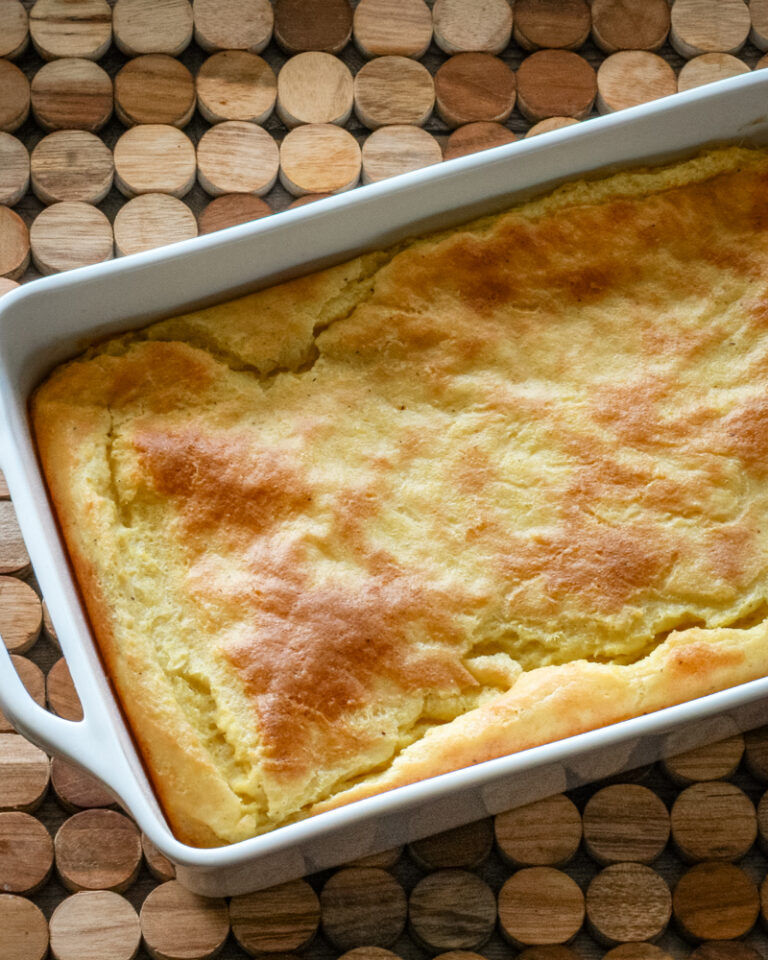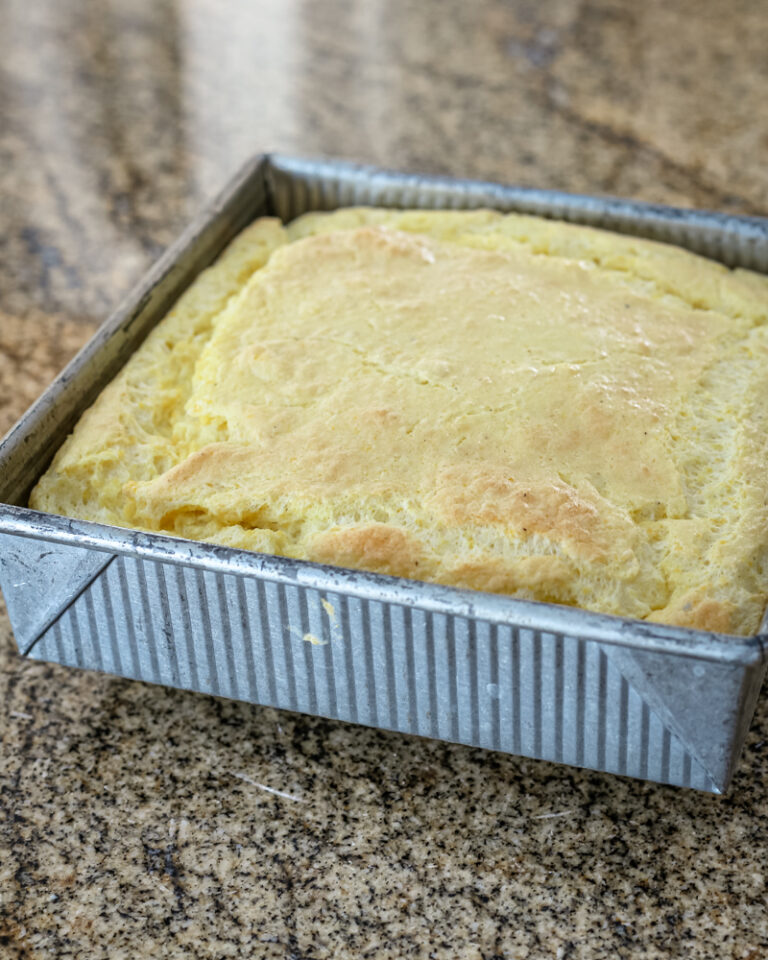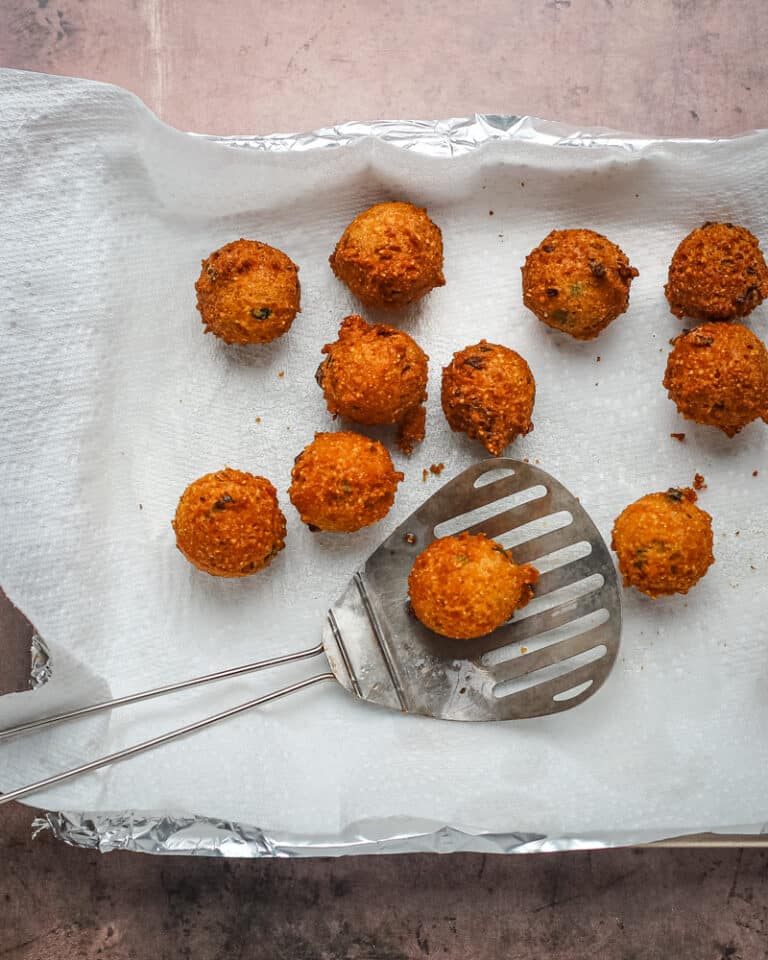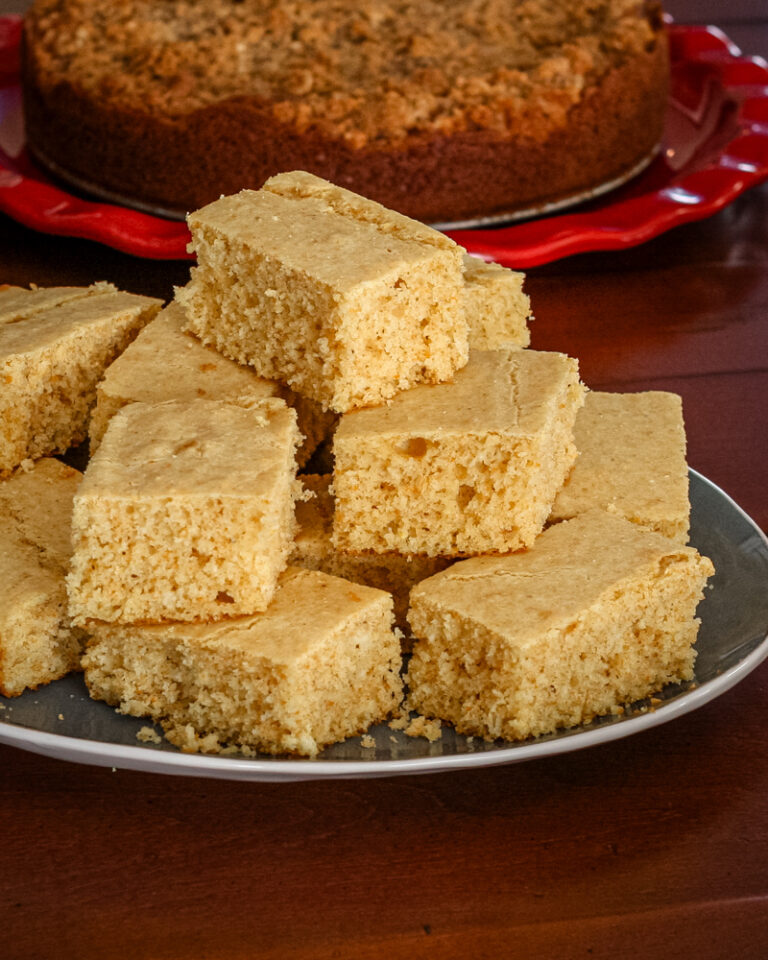Moist Sour Cream Cornbread
Sour cream and cream-style corn are the keys to this moist cornbread. It’s an excellent cornbread to serve with beans, greens, or soup.
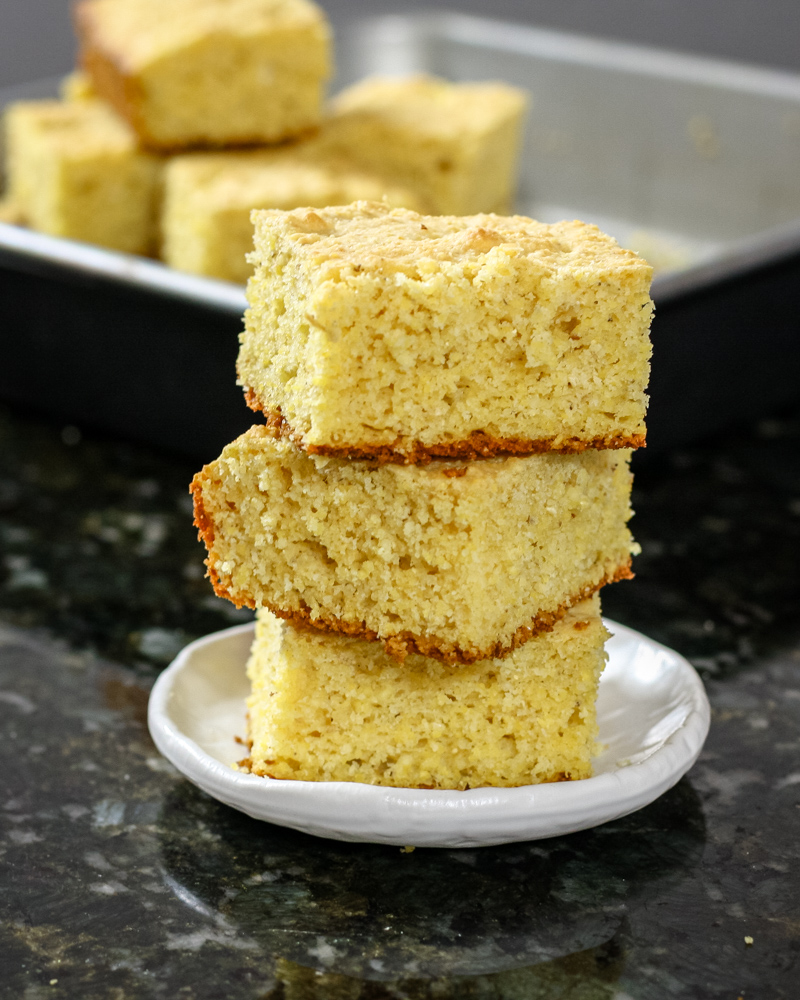
Sour cream and cream-style corn are the ingredients that make this popular cornbread rich, moist, and full of flavor. There’s no added sugar, keeping it true to Southern-style roots, but you can add a bit if you prefer a sweet version. The result is tender and hearty cornbread that goes beautifully with beans, collard greens, or a bowl of soup.
This cornbread bakes well in a square pan, round cake pan, or muffin tin. It’s easy to throw together with just a few pantry and fridge staples and makes a perfect side for both weeknight dinners and big Southern meals.
What You’ll Like About This Dish
Extra moist. Sour cream and cream-style corn give it a soft, tender crumb.
No added sugar. True to Southern cornbread traditions—though you can sweeten it if you like.
Flexible pan options. Bake it in a square pan, round pan, or muffin tin.
Ingredient Notes
- Cornmeal: Yellow cornmeal gives the bread classic color and texture.
- Flour: A bit of all-purpose flour helps hold it together and softens the crumb.
- Baking powder and soda: Work together with sour cream for lift.
- Salt: Enhances flavor—don’t skip it.
- Sour cream: Adds richness and moisture to the batter.
- Cream-style corn: Gives the cornbread sweetness and body.
- Eggs: Help bind the mixture and create structure.
- Butter: Melted and cooled—adds flavor and a tender crumb.
Steps to Make Moist Sour Cream Cornbread
- Preheat the oven and grease a square baking pan.
- Mix the dry ingredients in a large bowl.
- In a separate bowl, whisk together sour cream, cream-style corn, eggs, and butter.
- Combine the wet and dry mixtures until just moistened.
- Pour into the pan and bake until set and lightly golden on top.
- Cool slightly before cutting into squares.
Tips for Cornbread Success
- Don’t overmix—stir just until the dry ingredients are moistened.
- If you like a sweeter cornbread, add 3 to 4 tablespoons of sugar.
- Use a glass or metal pan for even baking—avoid dark nonstick pans if possible.
- Grease and flour the pan well to ensure easy release.
Recipe Variations
- Sweet version. Add sugar or honey for a lightly sweet cornbread.
- Muffins. Divide the batter among greased muffin cups and bake for 20 to 25 minutes.
- Add cheese. Stir in 1 cup of shredded cheddar or pepper jack.
- Spicy kick. Add minced jalapeños or green chiles.
- With herbs. Stir in chopped chives or thyme for savory flavor.
Serving Suggestions
- Serve with chili, pinto beans, or baked beans.
- Pair with collard greens, turnip greens, or braised cabbage.
- Add to a Southern breakfast alongside eggs and sausage.
- Top with a pat of butter or drizzle of honey (if you like it sweet).
- Use for cornbread stuffing or dressing recipes.
How to Store
Refrigerate: Store leftover cornbread in an airtight container or zip-top bag for up to 4 days. Let cool completely before storing.
Reheat: Wrap slices in foil and warm in a 325°F oven for 10 to 15 minutes, or microwave briefly until warmed through.
Freeze: Wrap individual squares and freeze in a container or freezer bag for up to 2 months. Thaw in the fridge or at room temperature before reheating.
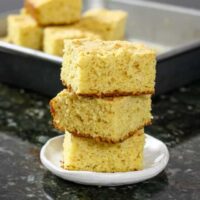
Moist Sour Cream Cornbread
Ingredients
- 1 1/2 cups cornmeal
- 1/2 cup all-purpose flour
- 1 1/2 teaspoon baking powder
- 1 teaspoon baking soda, scant
- 1/2 teaspoon salt
- 1 cup sour cream
- 1 15-ounce can cream-style corn
- 3 large eggs, beaten
- 6 tablespoons butter, melted and cooled slightly
Instructions
- Preheat the oven to 375 F.
- Grease and flour a 9-inch square baking pan.
- In a large mixing bowl, combine the cornmeal, flour, baking powder, soda, and salt.
- In another bowl, whisk the sour cream with the cream-style corn, eggs, and melted butter.
- Combine the two mixtures and stir until all ingredients are moistened. Immediately pour the mixture into the prepared baking pan.
- Bake for 35 to 40 minutes.
Nutrition
Disclaimer:
Our nutritional information is based on a third-party application that analyzes the ingredients list to determine the values. The information is meant to be helpful, but should be considered an estimate. Values may differ depending on measurements, brands, serving variations, and database availability.

